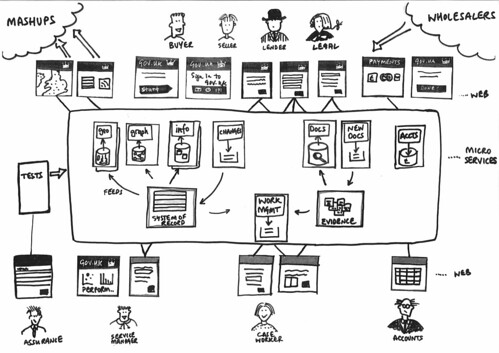A microservices-style architecture breaks down an application from a single monolithic structure into smaller independent services. Each service handles a particular business function and can be deployed separately from the others. They’re connected via application programming interfaces (API). This structure allows developers to achieve outcomes that would be difficult or impossible with other types of architecture.
Companies face many challenges in today’s business world. They have to be fast enough to adapt to new trends and market conditions while maintaining the flexibility needed to address disruptive startups in their industries. Customers also demand more engaging experiences and use that criterion as a critical deciding factor when they make purchase decisions.
How do the Top Companies Innovate at Rapid Speed and Increase Customer Engagement?
Netflix, Amazon, Facebook and Uber are known for being at the cutting edge of innovation. They drive significant customer engagement that fuels their revenue and builds brand loyalty. Established companies, such as Vanguard, Walgreens and Experian, also keep up with the competition. Even though these organizations are not typically thought of as ones that have significant speed and flexibility, each of them has innovated by adopting microservices style architectures that drove business value.
The Common Theme
Each one of these companies has adopted microservices-style architectures to rapidly innovate and improve customer engagement. They have the tools needed to quickly respond to changes in their market segments so they always land on top.
Microservice-style architectures brings greater software agility, better reliability and flexibility that your organization needs in a technology-driven business world. You can’t see the future, but this foundation allows you to react to unexpected shifts with ease.
Here are a few ways leading companies use microservices in their operations.
Customer Rewards Programs
Walgreens wanted a better way to set up its customer rewards program. The pharmacy chain gave customers points for various healthy activities, such as running. Trying to work with step-counting applications and other fitness trackers would be time-consuming to set up in a legacy system.
Instead, Walgreens adopted microservices-style architecture to put together an API that gives third-parties the ability to send that data to its rewards program. The customer gets the points, while Walgreens and the third-party application encourage higher engagement.
Getting More Out of Data
Experian, a credit reporting bureau, handles a substantial amount of data for consumer and commercial markets. Before it implemented microservices, each line of business had a separate set of data stored in different systems and locations. Accessing and sharing this information was a time-consuming and complex task.
The company started out with an API for internal use that could extract and translate data from any of the locations used in-house. The microservice was offered to Experian’s customers after they requested similar functionality. They no longer needed to open up a particular application to access the information that they needed.
Generating Personalized Customer Engagement Opportunities
SAP, an enterprise software developer, partnered with Facebook to provide better insights into the client’s journey. Companies could use their existing customer data from within their SAP-based systems and tie it to their social media campaigns. Customers receive marketing messages that are relevant and personalized based on the combined information available.
Marketers can see every digital and offline interaction to tailor product recommendations, suggestions and content on a one-to-one basis. The move away from a one-size-fits-all approach leads to favorable results.
Summary
Adopting microservices-style architectures can help your company get on a level playing field with your competition. You don’t have to wait months or years to put new applications or functionality in place when new market demands require it. Businesses large and small are leveraging microservices to get the most out of their software development. It’s time for you to join in!



Sorry, the comment form is closed at this time.